How many people will the 'nuclear winter' that comes after a nuclear war kill?

As tensions increase between major powers possessing nuclear weapons, some may worry that a nuclear war that will wipe out humanity will occur. Even if you survive a nuclear war itself, the ``
...To Survive a Nuclear War - YouTube
Once a nuclear war occurs, it is certain that human history will be divided into ``before the nuclear war'' and ``after the nuclear war.'' If a large-scale nuclear war occurs, a huge area will be destroyed by the shock of the explosion and a large-scale fire, and hundreds of millions of people may die, but the worst situation caused by a nuclear war will come after that.

This is a phenomenon called 'nuclear winter.' Kurzgesagt argues that nuclear winter could kill up to billions of people and, in the worst case scenario, could even completely collapse modern civilization.

When a nuclear bomb explodes, the shock wave and high-temperature blast wave destroy an area several kilometers around the hypocenter, and radioactive contamination spreads to the surrounding area as well.

There is a possibility that the fire will spread over a wide area and burn everything on the ground.

Immediately after the explosion, a huge mushroom cloud rises.

Within hours of the explosion, hot winds and smoke from fires burning cities and forests rise as

Fire-cumulonimbus clouds containing soot and aerosols cross the troposphere at

Soot and aerosols from large fires are usually washed away by rain. However, when it reaches the stratosphere, where there are almost no clouds due to fire-cumulonimbus clouds, it becomes impossible to remove soot from the atmosphere, and it may remain in the stratosphere for several years.

If this happened in a single city, the impact would be local, but it is based on the concept of

Days to weeks after a nuclear war, soot begins to cover the Earth at high altitudes, absorbing sunlight and blocking it from reaching the surface.

As a result, in just a few weeks, the amount of sunlight hitting the earth's surface will rapidly decrease, causing an extreme climate change known as a 'nuclear winter.'
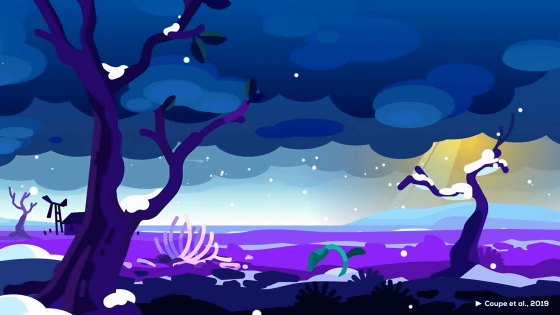
It is unclear how large nuclear winter will be, but at least it will not be permanent, and its effects are expected to last about 10 years at most.
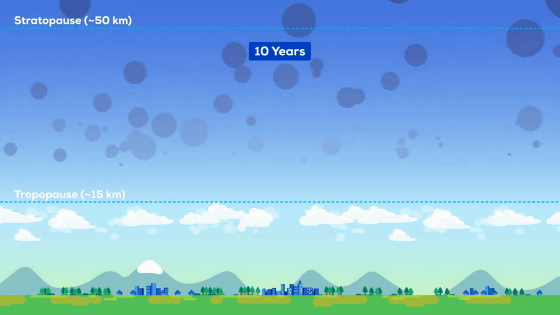
However, if large-scale climate change were to occur within just a few weeks, the effects would be devastating. Winters will be much longer and summers will be shorter or non-existent. As a result, the amount of water evaporating from the sea surface will decrease, and the amount of precipitation will decrease accordingly, leading to the possibility of large-scale droughts occurring on land.

Without sufficient sunlight, temperature, and rain, crops cannot grow properly, with devastating effects on food production.

The majority of humans live in mid-latitudes, reasonably far from the equator and the poles, including areas of high agricultural productivity such as the American Great Plains and Ukraine. However, if temperatures in the mid-latitudes were to drop significantly due to nuclear winter, the production of grains that are consumed worldwide, such as wheat and rice, would be significantly reduced.
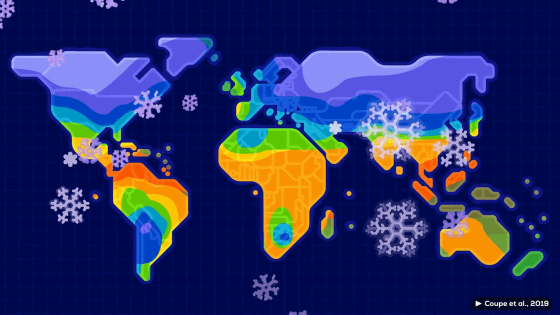
If the food production system collapses, there is a high possibility that food prices will rise significantly or that exports to other countries will be prohibited.
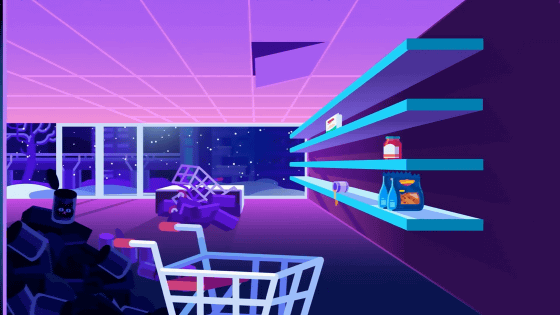
As a result, we would not be able to produce enough calories to feed the survivors of a nuclear war, and many would starve.
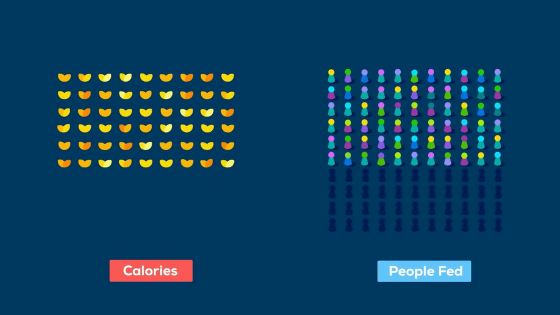
Humans only have a few weeks' worth of crops and food in stock, so it is impossible to withstand annual declines in production.
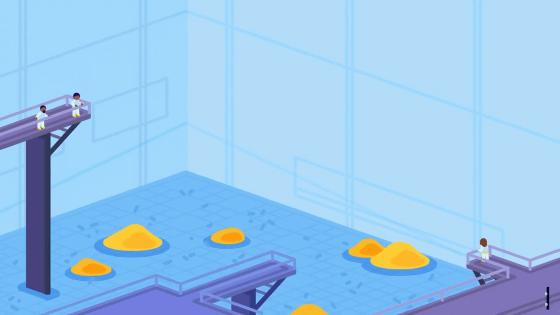
Climate change is not the only effect nuclear war has on food production. Since modern agriculture relies on a variety of industrially produced pesticides, fertilizers, and farm equipment, the destruction of these supply chains due to nuclear war would also have a negative impact on agricultural productivity.
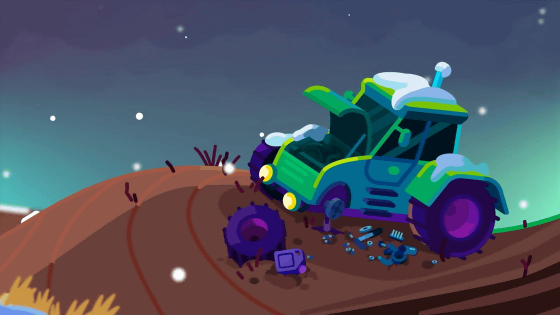
At the time of writing the article, there are two belligerent countries that scientists assume when considering ``nuclear winter'': ``India and Pakistan'' or ``the United States and Russia.'' If a nuclear war were to occur between India and Pakistan, it would be expected that about 100 relatively low-yield nuclear weapons would be used, but the nuclear explosion itself would still kill about 27 million people. That means more deaths than in World War I in just a few hours.

The ensuing ``nuclear winter'' will not be as intense, and will remain at a level that could be called ``nuclear autumn,'' but agricultural productivity is still expected to decline worldwide due to climate disruption.
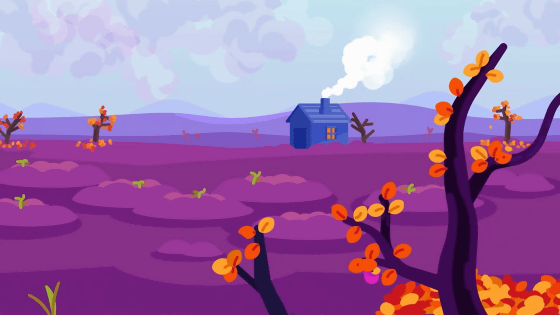
According to estimates, 250 million people worldwide could go hungry.
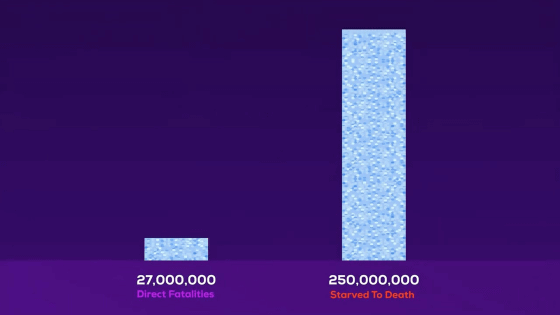
India and Pakistan are also engaged in an arms race, which could result in hundreds of nuclear weapons being used in war.
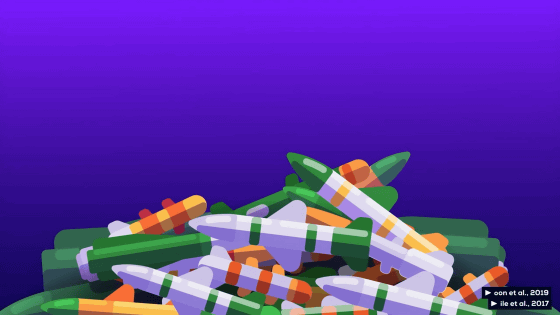
If about 250 nuclear weapons were used, more than 100 million people would die from bombing major population centers, and nuclear winter would cut the calories produced worldwide by about half.
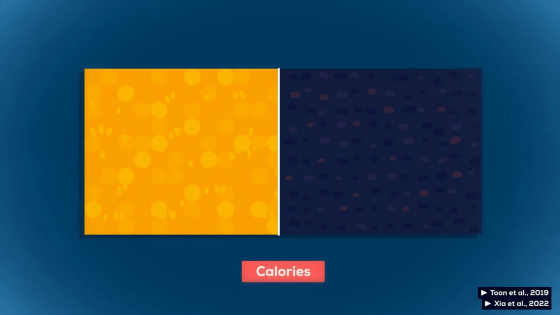
As a result, it is estimated that 2 billion people will starve to death.
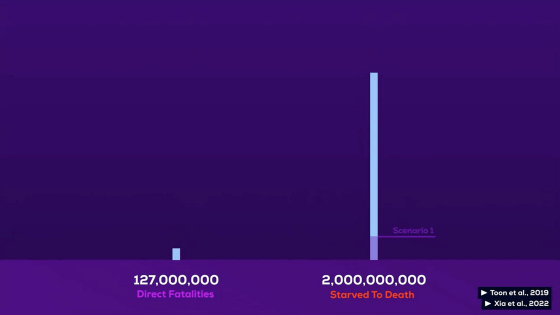
The worst-case scenario is an all-out nuclear war involving NATO countries, Russia, the United States, and China.

In the worst-case scenario, in which 4,400 nuclear weapons are used, 360 million people will die instantly and calorie production will decrease by 90%.
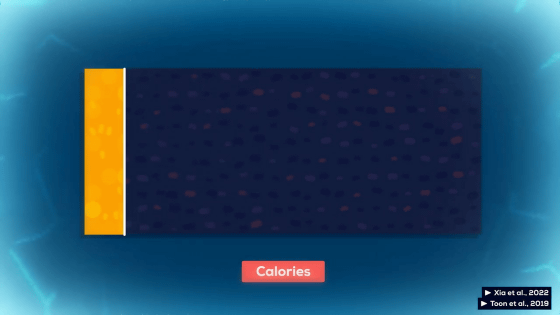
Almost all agriculture has been devastated and it will be very difficult to recover. It is estimated that approximately 5 billion people could die from starvation within two years.
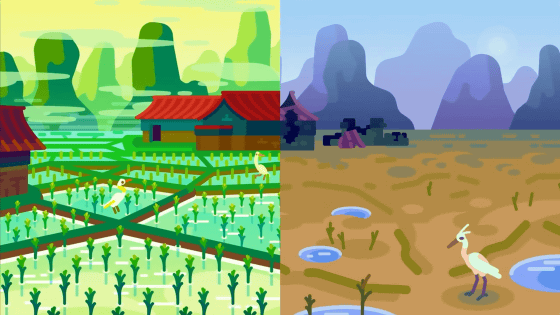
In Russia, China, Canada, the United States, and most of Europe, only a few percent of the population can survive, and civilization will never return to normal. On the other hand, since the majority of nuclear-weapon states are in the Northern Hemisphere, countries in the Southern Hemisphere such as Australia, New Zealand, and Argentina are relatively unaffected by a nuclear war, and the ``nuclear winter'' may be mild.
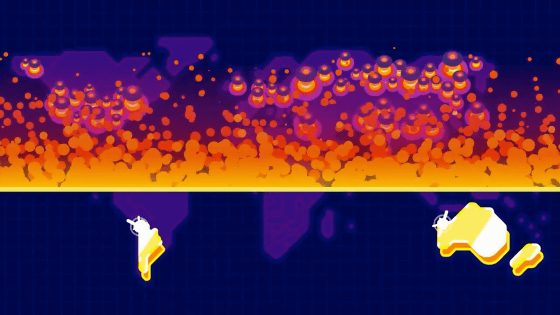
If that happens, these countries are expected to stop exporting food and focus on keeping their own people alive.
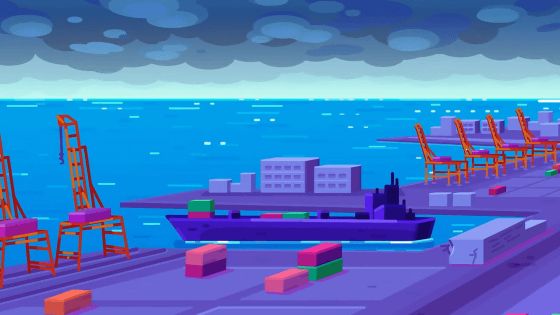
It is unknown how many people will survive when ``nuclear winter'' ends, but in the worst case, human civilization may be rolled back several thousand years.
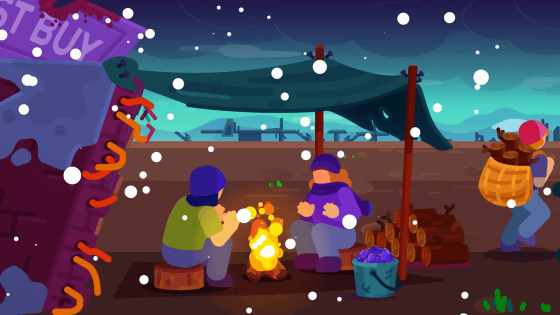
Kurzgesagt concluded by asking the question, 'Will they build nuclear weapons again after rebuilding civilization?'
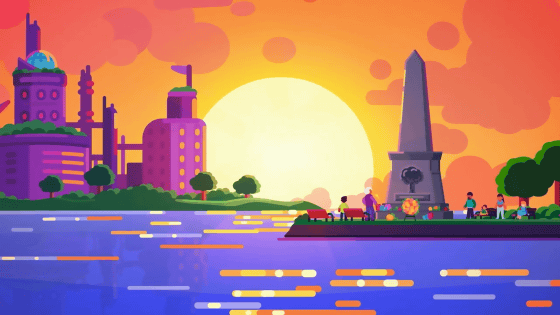
Related Posts:







